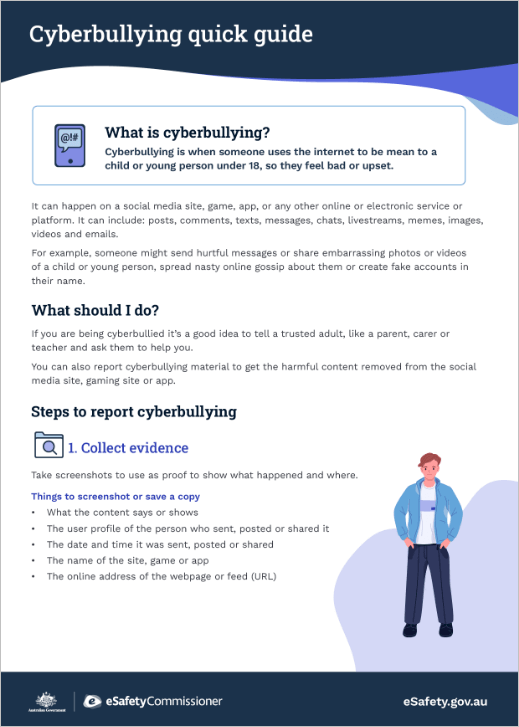What you can do
If someone is being really mean online, first of all it’s a good idea to:
- tell a trusted adult and ask them to help you – you could show them this page about cyberbullying
- change the settings on your device or online account so you don’t see so many messages, posts or comments from the person who was mean – find out how in The eSafety Guide.
If you need cyberbullying material removed:
- report it to the social media site, gaming site or other app that was used to send, post or share the harmful content (this can be the fastest way to get it removed) – find reporting links for most sites, games and apps in The eSafety Guide
- check our tips about how to take care of yourself if you are cyberbullied.

